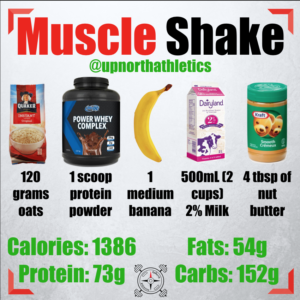Muscle Gain: Creating a Calorie Surplus
What is a Calorie Surplus?
A calorie surplus is when you eat more energy (calories) than your body burns, resulting in weight gain.
How is a Calorie Surplus Beneficial?
Depending on your goals, eating at surplus will lead to weight gain which can also lead to muscle gain with proper weight training. People who struggle to gain weight and muscle should eat in a surplus until they reach a weight or body composition they enjoy. Creating a calorie surplus gets tricky at times because like a calorie deficit where I explain how to find your maintenance, you don't want to end up in too much of a surplus and gain too much fat. Going at a slow surplus will lead to more muscle gain and less fat gain, meaning an all-around better aesthetic look.
Eating in a Surplus
If you want to start eating in surplus I recommend to first find your maintenance calories and stick with a set of calories until you can maintain your current body composition for 2 weeks. Once you have found your maintenance calories you will add about 200–300 calories to your maintenance to be in a surplus. The number of calories added to your maintenance will depend on your activity level and body composition. In my opinion, a good goal is to gain about 2lbs-4lbs of muscle per month. These factors depend on how experienced a lifter you are, how much of a surplus you're in and how much fat you have gained in that month. You might gain more weight than 2–4lbs a month which could be more muscle gain, fat gain or water weight. Keep in mind that in your first week you might gain more weight as you will be increasing carbs which could lead to more water weight.
Macronutrients for a Calorie Surplus
In my opinion, eating around 0.82–1g of protein per pound of bodyweight is a good amount of protein while in a surplus. You can have more protein if you'd like, but it isn't necessary. Once again, with a calorie deficit, carbs and fats can be distributed how you'd like. I would suggest between 20–35% of your daily calorie intake from fats and around 40–60% of your calorie intake from carbs. I personally enjoy eating more carbs so I might have 50% carbs, 25% fats, and 25% protein. By doing this, I'm ensuring that I am incorporating each macronutrient, but also giving myself more carbs which is what I crave the most. This is just an example to play around with different percentages that work for you.
Conclusion
I recommend eating a 70–80% healthy whole food approach because it’s important to ensure you're getting the right micronutrients and vitamins to stay healthy. The other 20–30% you can eat whatever other foods that you like. The good thing about being in a surplus is that you have a little more wiggle room to be a bit more lenient with what you eat. What I don't recommend is dirty bulking. Dirty bulking is basically eating whatever you want at anytime you want without having any control. This does lead to a calorie surplus, which will lead to muscle and strength gains but it will also lead to fat gain which might not help you get the look you’re trying to achieve. I personally, want to have optimal muscle and strength while keeping a low body fat percentage and having a nice atheistic look.
---
If you are having a hard time getting in calories while in a surplus, try this shake idea I made on my Instagram (upnorthathletics) 👇🏼👇🏼👇🏼
Written By: Jereymi Longpre

